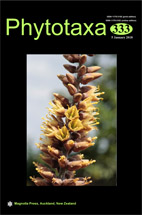Abstract
We have found a taxonomically unclear linear-leaved Potamogeton (section Graminifolii, Potamogetonaceae) in Central Yakutia (Asian Russia). This form resembles P. friesii and P. pusillus, two common species in the republic, and the mainly European species P. rutilus and North American P. strictifolius. These species, except P. strictifolius, did not differ by variation of the nuclear ITS region. The chloroplast markers petL-psbE and rpl32-trnL clearly separated the unclear Yakutian plants from P. friesii and P. pusillus, and the latter marker revealed similarity between the European P. rutilus and the Yakutian samples. The latter fit well within the morphological circumscription of P. rutilus. We confirmed the presence of P. rutilus in five localities in Central Yakutia and 13 more in other regions of North Asia. These records greatly extends to the east the distribution range of this species known before mainly west of the Middle Volga. Potamogeton rutilus prefers clean, mainly mesotrophic lakes with alkaline waters, and occurs in coastal areas or in limestone and sandstone catchments. The species usually grow in deep waters on silt-sandy bottom, in species-rich communities. It is sensitive to pollution and competition with more robust aquatic plants. Due to local distribution and specific habitat requerments P. rutilus can be regarded as threatened species and deserve the category Vulnerable in regional and global Red Lists.

